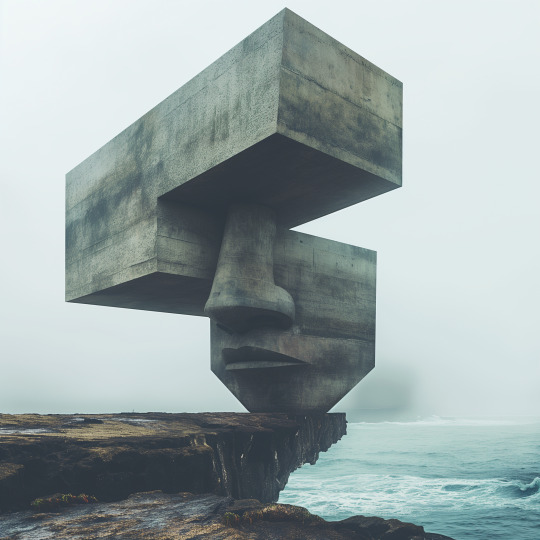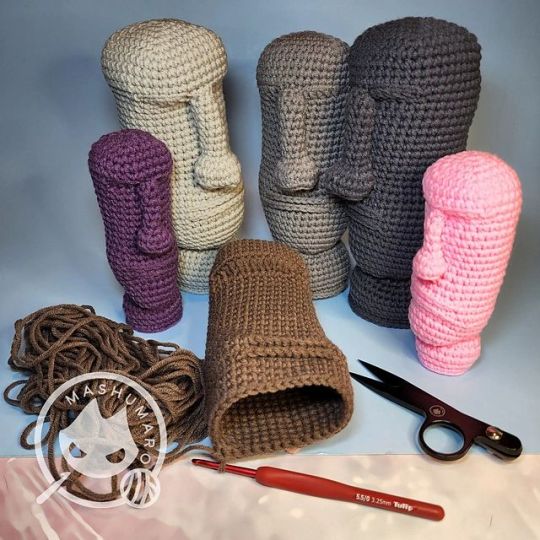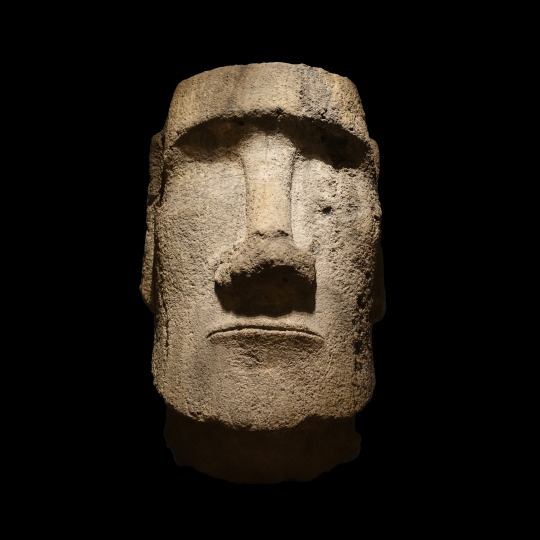#easterisland
Explore tagged Tumblr posts
Photo

Polynesian Navigation & Settlement of the Pacific
Polynesian navigation of the Pacific Ocean and its settlement began thousands of years ago. The inhabitants of the Pacific islands had been voyaging across vast expanses of ocean water sailing in double canoes or outriggers using nothing more than their knowledge of the stars and observations of sea and wind patterns to guide them.
The Pacific Ocean is one-third of the earth's surface and its remote islands were the last to be reached by humans. These islands are scattered across an ocean that covers 165.25 million square kilometres (63.8 million square miles). The ancestors of the Polynesians, the Lapita people, set out from Taiwan and settled Remote Oceania between 1100-900 BCE, although there is evidence of Lapita settlements in the Bismarck Archipelago as early as 2000 BCE. The Lapita and their ancestors were skilled seafarers who memorised navigational instructions and passed their knowledge down through folklore, cultural heroes, and simple oral stories.
The Polynesian's highly developed navigation system impressed the first European explorers of the Pacific and since then scholars have been debating several questions:
was the migration and settlement of the Pacific islands and into Remote Oceania accidental or intentional?
what were the specific maritime and navigational skills of these ancient seafarers?
why has a large body of indigenous navigational knowledge been lost and what can be done to preserve what remains?
what type of sailing vessels and sails were used to cross an open ocean?
Ancient Voyaging & Settlement of the Pacific
By at least 10,000 years ago, humans had migrated to most of the habitable lands that could be reached on foot. What remained was the last frontier – the myriad islands of the Pacific Ocean that required boat technology and navigational methods be developed that were capable of long-range ocean voyaging. Near Oceania, which consists of mainland New Guinea and its surrounding islands, the Bismarck Archipelago, the Admiralty Islands, and the Solomon Islands was settled in an out-of-Africa migration c. 50,000 years ago during the Pleistocene period. These first settlers of the Pacific are the ancestors of Melanesians and Australian Aboriginals. The small distances between the islands in Near Oceania meant that people could island-hop using rudimentary ocean-going craft.
The so-called second wave of migration into Remote Oceania has been an intensely debated scholarly topic. Remote Oceania is the islands to the east of the Solomon Islands group such as Vanuatu, Fiji, Tonga, Aotearoa (New Zealand), Society Islands, Easter Island, and the Marquesas. What is debated is the origins of the first people who settled in this region between 1500-1300 BCE, although there is general agreement that the ancestral homeland was Taiwan. A dissenting view has been that of Norwegian adventurer Thor Heyerdahl (1914-2002 CE) who set out in 1947 CE on a balsa raft called Kon-Tiki that he hoped would prove a South American origin for Pacific islanders. Archaeological and DNA evidence, however, points strongly to a southeast Asian origin and seafarers who spoke a related group of languages known as Austronesian who reached Fiji in 1300 BCE and Samoa c. 1100 BCE. All modern Polynesian languages belong to the Austronesian language family.
Collectively, these people are called the Lapita and were the ancestors of the Polynesians, including Maori, although archaeologists use the term Lapita Cultural Complex because the Lapita were not a homogenous group. They were, however, skilled seafarers who introduced outriggers and double canoes, which made longer voyages across the Pacific possible, and their distinctive pottery – Lapita ware – appeared in the Bismarck Archipelago as early as 2000 BCE. Lapita pottery included bowls and dishes with complex geometric patterns impressed into clay by small toothed stamps.
Between c. 1100-900 BCE, there was a rapid expansion of Lapita culture in a south-east direction across the Pacific, and this raises the question of intentional migration.
Continue reading...
54 notes
·
View notes
Text

#moai#rapanui#chile#easterisland#isladepascua#travel#dylanteromeme#ol#moaigr#hangaroa#travelphotography#memes#art#instachile#moais#meme#tiki#shitpost#dylantero#rapanuilove#isoladipasqua#travelgram#dylanteromemes#anakena#chilegram#ranoraraku#polinesia#nature#island#instatravel
6 notes
·
View notes
Photo

A descoberta de um novo Moai na Ilha de Páscoa. Localizada a 3,5kms do Chile, a Ilha de Páscoa é muito conhecida pelos Moais. Os Moais são estátuas gigantes (que chegam a ter 4 metros de altura)criadas pelo povo Rapa Nui. Tem quem diga que a Ilha de Páscoa é a ilha povoada (cerca de 8 mil habitantes)mais remota do mundo. E um dos grandes mistérios da humanidade é de como foram construídos esses Moais e por que todos estão em uma mesma posição na ilha,todos estão de costas para o mar. As poucas informações já descobertas é que foram feitas para homenagear líderes falecidos. São cerca de 900 estátuas ao todo na ilha e a poucos dias foi descoberta mais uma, em tamanho menor (por volta de 1,60 de altura)nos fundos de um lago seco. Caso você tenha interesse em ver um Moai legítimo mas não quer ir para a Ilha de Páscoa 🗿,pode ir ao Museu Fonck que fica em Viña del Mar,no Chile. Essa foto eu tirei quando fui a Viña del Mar,janeiro de 2023. 😍 #turismo #tourism #instatravel #travelblogger #travelgram #travelblog #noticiasdeviagem #noticiasdeturismo #instagramdeviagem #instagramdeturismo #chile #turismochile #ilhadepascoa #isladepascua #easterisland #moai #moai🗿 #rapanui #museufonck #vinadelmar #viñadelmar (em Viña del mar, Chile) https://www.instagram.com/p/Cp2ZjbiumTQ/?igshid=NGJjMDIxMWI=
#turismo#tourism#instatravel#travelblogger#travelgram#travelblog#noticiasdeviagem#noticiasdeturismo#instagramdeviagem#instagramdeturismo#chile#turismochile#ilhadepascoa#isladepascua#easterisland#moai#moai🗿#rapanui#museufonck#vinadelmar#viñadelmar
7 notes
·
View notes
Photo

Wonder what you're making for Easter? Show me your army of DumDums🗿🗿🗿🗿🗿🗿🗿 Pattern is available in my Etsy and Ravelry store. . . . #moai #easterisland #easterislandhead #dumdum #crochet #amigurumi #crochetpattern #amigurumipattern #designedandmadebymashumaro https://www.instagram.com/p/Cp3bcwbvvaS/?igshid=NGJjMDIxMWI=
#moai#easterisland#easterislandhead#dumdum#crochet#amigurumi#crochetpattern#amigurumipattern#designedandmadebymashumaro
4 notes
·
View notes
Video
Moai Sunrise por John Fleischman Por Flickr: Most visitors come to Easter Island to see the moai, monolithic human figures carved by the Rapa Nui people. British mariner Capt. James Cook wrote in 1774, “We could hardly conceive how these islanders, wholly unacquainted with any mechanical power, could raise such stupendous figures.” Even today the mystery remains… Why did they carve such enormous statues? How did they move them and raise them up onto platforms?
2 notes
·
View notes
Video
youtube
Cómo Planificar Viaje a Rapa Nui | Vive la Experiencia con Hotumatur #i...
Follow Us: Hotumatur
1 note
·
View note
Text
youtube
Chile Travel Guide | 10 Most Beautiful Places to Visit in Chile | Life Travel
https://expedia.com/affiliate/lL823mo
https://airalo.tp.st/UYXhV3Jr
http://knowledgeglaxy.com/travels/
Description:
Discover the breathtaking beauty of Chile in our latest travel guide! 🇨🇱 From the otherworldly landscapes of the Atacama Desert to the stunning fjords of Patagonia, Chile is a land of diverse natural wonders. Explore picturesque cities, towering mountains, and pristine beaches that make this South American gem a must-visit destination. Don't miss our list of the 10 Most Beautiful Places to Visit in Chile, featuring iconic spots like Torres del Paine, Easter Island, and the vibrant capital, Santiago.
🌍 Plan your next adventure now!
👉 Don't forget to like, comment, and subscribe for more amazing travel content!
#Chile#TravelChile#VisitChile#BeautifulDestinations#SouthAmericaTravel#TorresDelPaine#AtacamaDesert#Patagonia#EasterIsland#Santiago#TravelGuide#AdventureAwaits#Wanderlust#Youtube
0 notes
Text

Easter Island Moai SVG PNG
Bring the ancient wonders of Easter Island to life with this Moai SVG and PNG set, featuring the iconic stone statues that define Polynesian culture. Perfect for t-shirts, stickers, tattoos, and more, these high-resolution vector files are ideal for Cricut projects, DIY crafts, and art prints. Celebrate the historical monuments of Chilean heritage by incorporating these detailed Moai designs into your creations. Whether you're exploring ancient art or adding a unique element to your projects, these images are perfect for crafting stunning vinyl decals and tribal-themed artwork.
#EasterIsland#MoaiStatue#MoaiSVG#MoaiCricut#MoaiVector#MoaiPNG#MoaiPrintable#MoaiShirt#etsyseller#etsysvg#digitaldownload#shirtdesign#svg#transparentpng#cricut
0 notes
Text
Top 50 Must Visit Global Destinations: Wonders of the World
#Featured#Adventure#AmalfiCoast#AngkorWat#Antarctica#AuroraBorealis#Bagan#Bali#Banff#Barcelona#BoraBora#CapeTown#Cappadocia#CinqueTerre#Culture#DeadSea#Dubai#EasterIsland#Fiordland#GalapagosIslands#GrandCanyon#GreatBarrierReef#GreatWallofChina#HalongBay#Havana#History#IguazuFalls#Istanbul#Jaipur#Kruger
1 note
·
View note
Text
Exquisite Easter Island
0 notes
Text
New Blog. Lemuria: The Spirituality & Philosophy of The Motherland of Man

“Belief in their one Creator or God and the Oneness of all things was the most fundamental principle underlying the Lemurian philosophy and the one that this civilization wanted to leave as their major legacy to the world.” – Una Marcotte, author of Lemuria: A Civilization Time Forgot
To find out more about the Spirituality and Philosophy of Lemuria (The Motherland of Man) that was once a continent in the Pacific Ocean during pre-ancient times, click here: https://rb.gy/479geb
#lemuria#mu#civilization#pafificocean#hawaiianislands#fiji#easterisland#themarinas#southpacificislands#spirituality#philosophy#peace#love#gardenofeden#empireofthesun#nature#humanity#compassion#trust#forgiveness#nocrime#nodisease#nopollution#nothreats#lifestyle#karma#universe#atlantis#atlanteans
0 notes
Text
this needs to be sent back to easter island.

Moai Head, Chile, Between circa 1250 and circa 1500,
Basalt, H 170 cm (66.9 in) , W 100 cm (39.3 in), Thick 90 cm (35.4 in)
Collection Musée du Quai Branly, Paris.
52 notes
·
View notes
Text
Ambiance déco exotique à l'Ile de Pâques
🌎 Vous connaissez l'ile de Pâques?🗿#Inspiration garantie! Je vous partage mes carnets de #voyages sous la forme de #moodboard autour du monde! Mes astuces pour décorer dans un style #exotique et #biophilique ✅
#chili#rapanui#easterisland#isladepascua#déco#design#decoration#inspiration#iledepaques#Pacifique#tourdumonde#biophilie#décorer#style#designerdebonheur#ambiance#globetrotter#astucesdeco#decoratricedinterieur#architectureinterieure#planchedeco#hangaroa
0 notes
Text

Rano Raraku, Easter Island
1 note
·
View note
Text

Earth palette
Gabriele D’Asaro. Easter Island, Chile.
0 notes



